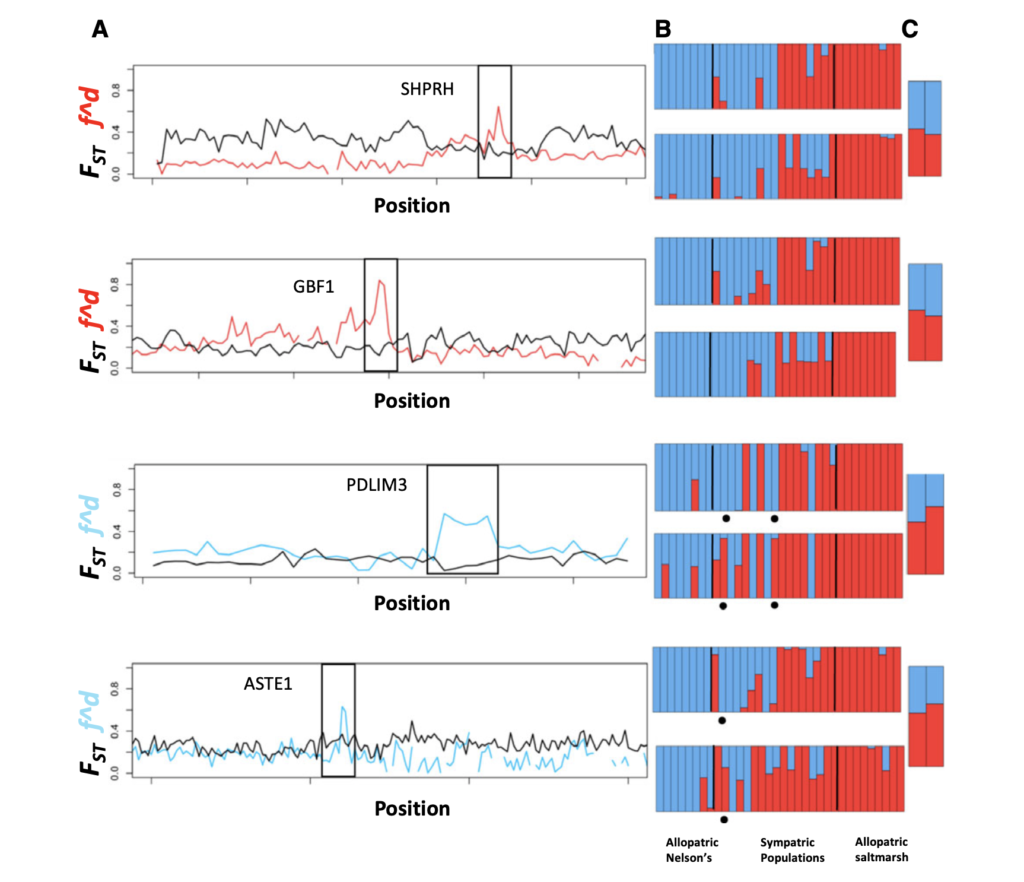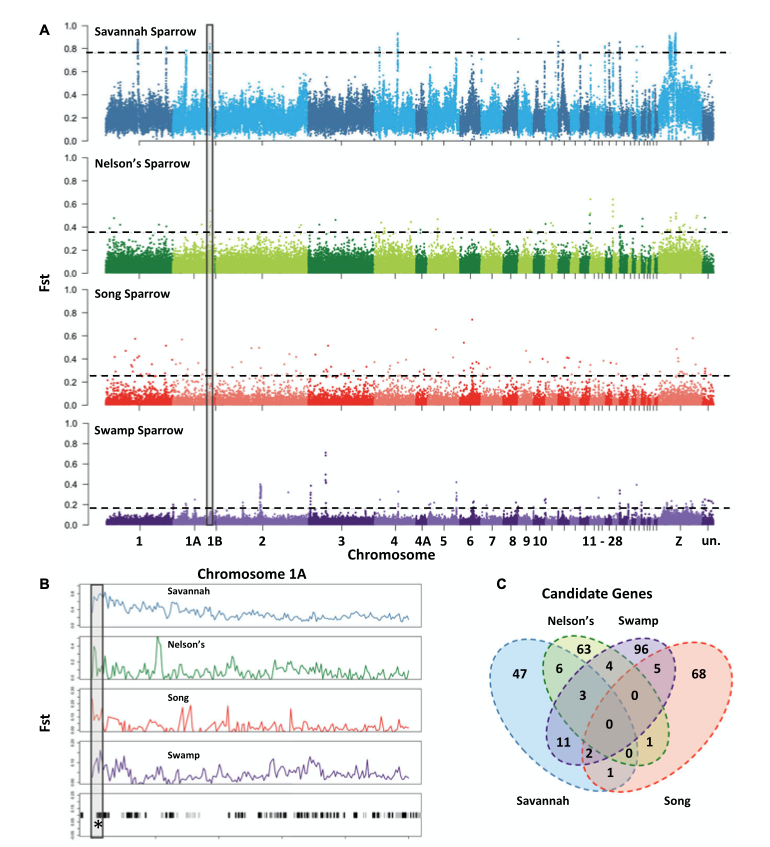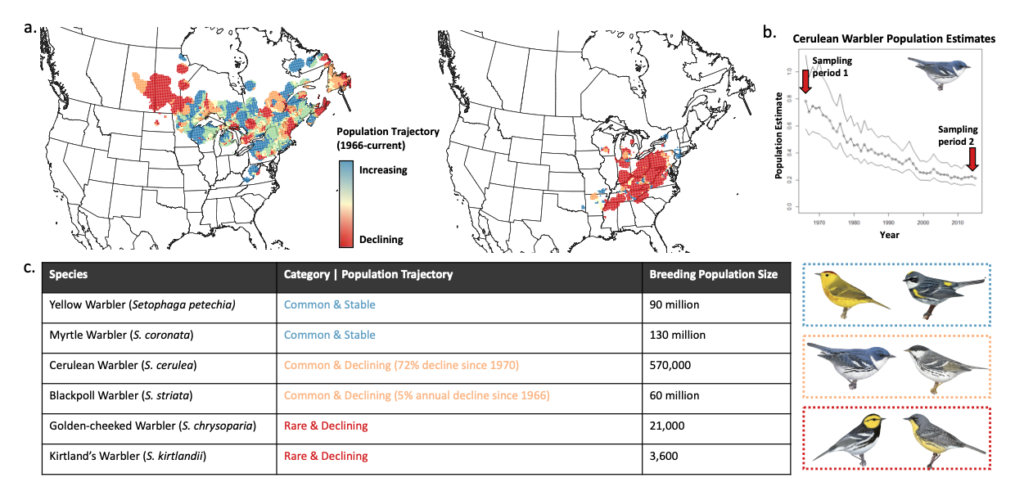Implications of Hybridization in Natural Populations:
Because ongoing hybridization and introgression between two species result in a diversity of recombinant genotypes, natural hybrid zones offer opportunities to track the exchange of genetic and phenotypic traits driving species divergence. Since 2011, I have studied the mechanistic drivers and resulting implications of hybridization between two tidal marsh endemics in New England: Saltmarsh and Nelson’s sparrows. Previous work includes an investigation into genotype-phenotype correlations (Walsh et al., 2015a), habitat associations (Walsh et al., 2015b), geographic and genomic clines (Walsh et al., 2016a), female fitness (Walsh et al., 2016b), and mating behavior and paternity (Walsh et al., 2018a). My recent work uses genomic approaches to assess hybridization in both a contemporary and historic context in a range of systems, including the well known Bullock’s and Baltimore oriole hybrid zone.

Genomics of Speciation and Local Adaptation:
Understanding the role of ecological speciation (i.e. the evolution of reproductive isolation between populations due to adaptation to divergent environments) in generating and maintaining biodiversity has become an increasing focus for evolutionary biologists. My current and future research is predominantly focused on the identification of adaptive potential in sparrows across steep ecological gradients. These efforts are geared toward identifying and preserving the building blocks for evolutionary change and fall into two overarching research questions:
Delineating Populations Boundaries in the Face of Cryptic Diversity and the Genomics of Local Adaptation: My current and future research endeavors are focused on identifying the ecological, geographic, and demographic drivers of diversification in a wide-spread passerine, the Song Sparrow. This work includes the investigation of micro-geographic adaptation across five subspecies of Song Sparrows inhabiting San Francisco Bay, as well as a larger-scale project investigating the ecological, demographic, genetic, and geographic drivers of diversification across 25 subspecies of Song Sparrow found in a suite of habitat types across North America.
A comparative approach to identifying parallel adaptations across tidal marsh gradients: My recent work has compared patterns of genome-wide divergence among avian tidal marsh endemics and their upland relatives to isolate the genetic drivers of tidal marsh adaptations. I replicated these comparisons across four species: the Nelson’s, Savannah, Swamp, and Song Sparrow. These groups differ in the time since divergence, demographic history, and habitat specificity. Thus, these independent tidal marsh colonization events provide a tractable system for characterizing adaptive variation while providing a framework for testing for general patterns through a replicated study design that allowed me to disentangle selective versus neutral genetic forces.

Tracking Historic Changes in Diversity and Predicting Future Adaptive Potential:
Biodiversity loss is often insidiously gradual, with large but incremental declines over time that are masked by our own shifting human expectations. My most recent work is focused on the development of new methods that leverage museum specimens to provide robust historic baselines for genetic diversity and effective populations sizes in six species of warblers, in ways that can then be applied to many kinds of taxa. This comparative framework provides a methodological approach for testing the power and capabilities of genomic markers in detecting varying levels of diversity changes over time. In addition to providing information on the impacts of population declines on genetic diversity that can be utilized to inform management initiatives, this research will provide an important model for method development that can be expanded to assess diversity changes in passerine species on a much broader taxonomic scale.
